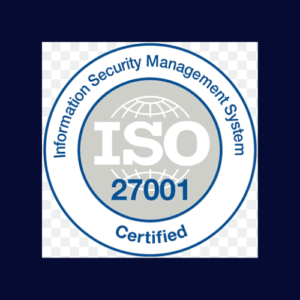What is PCI DSS (Payment Card Industry Data Security Standard)?
PCI DSS, or Payment Card Industry Data Security Standard, is a comprehensive framework established to bolster the security of credit, debit, and cash card transactions. It sets forth stringent guidelines and requirements to safeguard cardholder data, mitigate the risk of fraud, and ensure compliance with industry standards.
What is the purpose of PCI DSS?
The purpose of PCI DSS, or Payment Card Industry Data Security Standard, is to enhance the security of payment card transactions and protect cardholder data. It establishes comprehensive guidelines and requirements for organizations handling payment card information to prevent breaches, fraud, and unauthorized access.
Compliance with PCI DSS ensures a secure environment for processing, storing, and transmitting sensitive cardholder data, thereby fostering consumer trust and minimizing business financial risks.
What is PCI SSS (Payment Card Industry Software Security Standard)?
The Payment Card Industry Software Security Standard (PCI SSS) focuses on securing software applications involved in payment card transactions. It complements PCI DSS by addressing software vulnerabilities to enhance overall payment card security. For organizations handling payment card data, compliance with PCI SSS is essential to mitigate cyber risks and ensure data integrity.
Learn how the Payment Card Industry Data Security Standard (PCI DSS) ensures the safe handling of cardholder data worldwide. Explore here.
The PCI Security Standards Council (PCI SSC) has outlined six primary objectives for PCI DSS compliance
- Build and maintain a secure network and systems:
Ensuring that payment card transactions occur within a secure network environment is paramount. This goal involves implementing robust firewall configurations, securing network infrastructure, and utilizing encryption protocols to safeguard cardholder data during transmission.
Entails encrypting sensitive data at rest and in transit, securely storing cardholder information, and implementing access controls to limit unauthorized access to this data.
- Maintain a vulnerability management program:
Involves conducting regular vulnerability assessments, patch management, and implementing secure coding practices to mitigate the risk of exploitation by malicious actors.
- Implement strong access control measures:
It encompasses assigning unique user IDs, implementing role-based access controls, and restricting physical access to cardholder data to authorized personnel only.
- Regularly monitor and test networks:
Involves implementing intrusion detection systems, conducting regular security testing, and analyzing audit logs to detect and respond to security incidents promptly.
- Maintain an information security policy:
Defining security objectives, assigning responsibilities, and providing ongoing security awareness training to personnel to uphold the organization’s commitment to data security.
Have questions about PCI DSS compliance? Feel free to schedule a call with our expert for personalized guidance.
What are the requirements of PCI DSS?
To ensure the security of payment card transactions, organizations must meet several PCI DSS (Payment Card Industry Data Security Standard) requirements:
These requirements encompass aspects such as secure network infrastructure, protection of cardholder data, vulnerability management, access control measures, network monitoring, and information security policies.
PCI DSS compliance levels
PCI DSS compliance levels categorize organizations based on the volume of card transactions they process annually.
Level 1 includes businesses with over 6 million transactions, requiring annual QSA assessments and quarterly network scans by ASVs.
Level 2 comprises 1 to 6 million transactions, mandating annual SAQ submissions and potential quarterly scans.
Level 3 handles 20,000 to 1 million transactions, similar to Level 2 but with potentially fewer scans.
Level 4, for those with fewer than 20,000 transactions, necessitates annual SAQ completion and possible quarterly scans.
Benefits of PCI DSS Compliance
Enhanced Data Security: PCI DSS compliance ensures robust security measures are in place, safeguarding payment card data from unauthorized access and potential breaches.
Reduced Fraud Risk: Adhering to PCI DSS guidelines helps organizations minimize the risk of fraudulent activities, safeguarding both the business and its customers from potential financial harm.
Customer Trust and Confidence: Compliance with PCI DSS instills confidence in customers, reassuring them that their payment card information is handled with the utmost care and security.
Regulatory Compliance: Achieving PCI DSS compliance not only aligns businesses with industry best practices but also ensures adherence to regulatory requirements, avoiding potential penalties and legal repercussions.
Streamlined Operations: Implementing PCI DSS compliance often results in improved internal processes, leading to more streamlined operations and increased overall efficiency.
Best practices for achieving PCI DSS compliance while optimizing payment card security
1. Understanding PCI DSS Requirements:
Start by familiarizing yourself with the core requirements outlined by PCI DSS. From secure network configurations to encryption protocols, each requirement plays a crucial role in fortifying payment card security.
2. Implementing Secure Network Infrastructure:
Establishing a secure network infrastructure is fundamental to PCI DSS compliance. Utilize firewalls, intrusion detection systems, and strong access control measures to safeguard sensitive data from unauthorized access.
3. Protecting Cardholder Data:
Encrypting cardholder data both in transit and at rest is vital for PCI DSS compliance. Leverage encryption technologies to ensure that payment card information remains protected throughout the transaction process.
4. Regularly Monitoring and Testing Systems:
Continuous monitoring and testing of systems are key to identifying and addressing potential vulnerabilities. Conduct regular security assessments, penetration tests, and audits to ensure compliance with PCI DSS standards.
5. Enforcing Access Control Measures:
Restrict access to cardholder data on a need-to-know basis. Implement strong authentication mechanisms, assign unique IDs to users, and monitor access logs to prevent unauthorized access to sensitive information.
6. Maintaining Information Security Policies:
Develop and enforce comprehensive information security policies that align with PCI DSS requirements. Regularly update and communicate these policies to employees to ensure adherence to security protocols.
